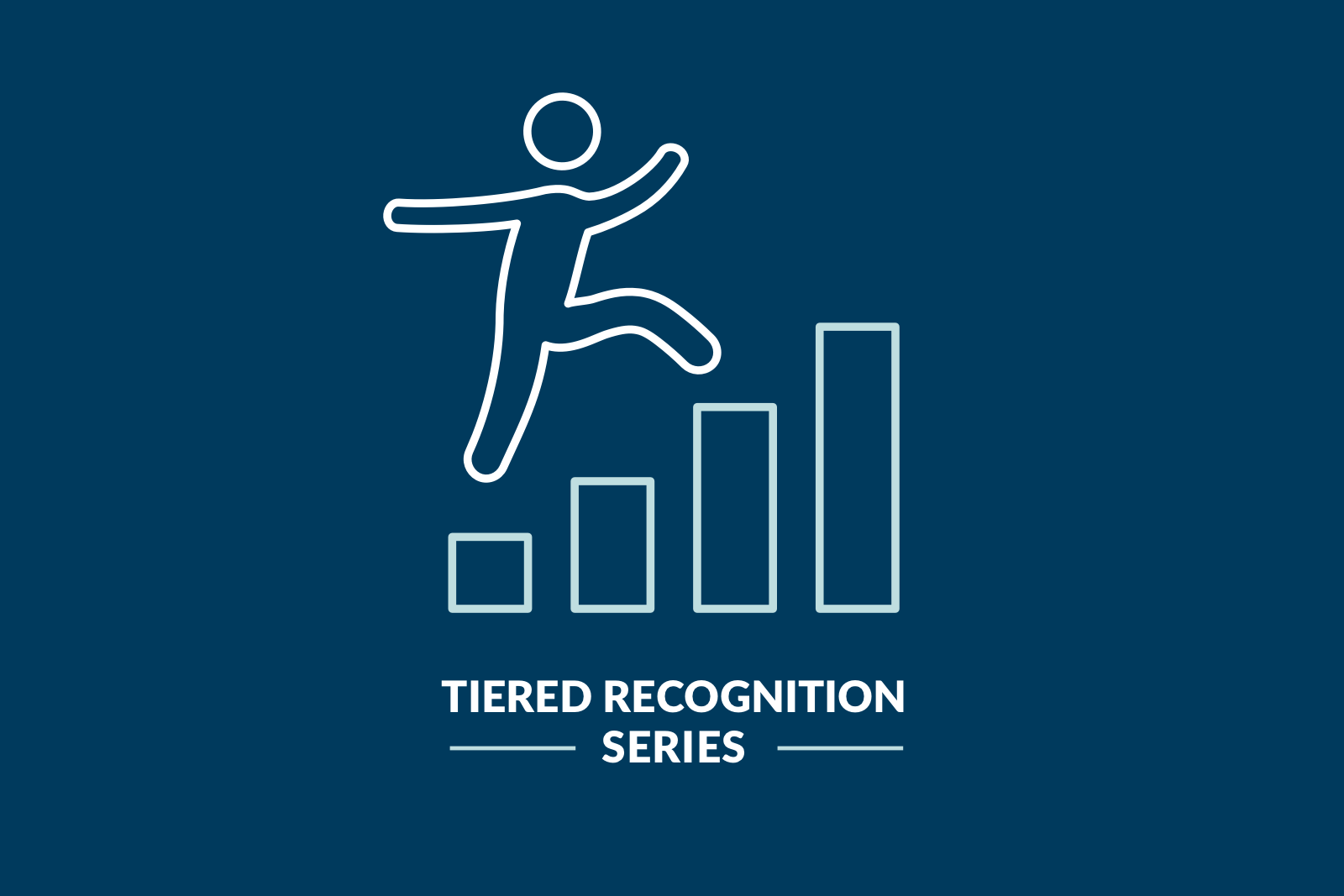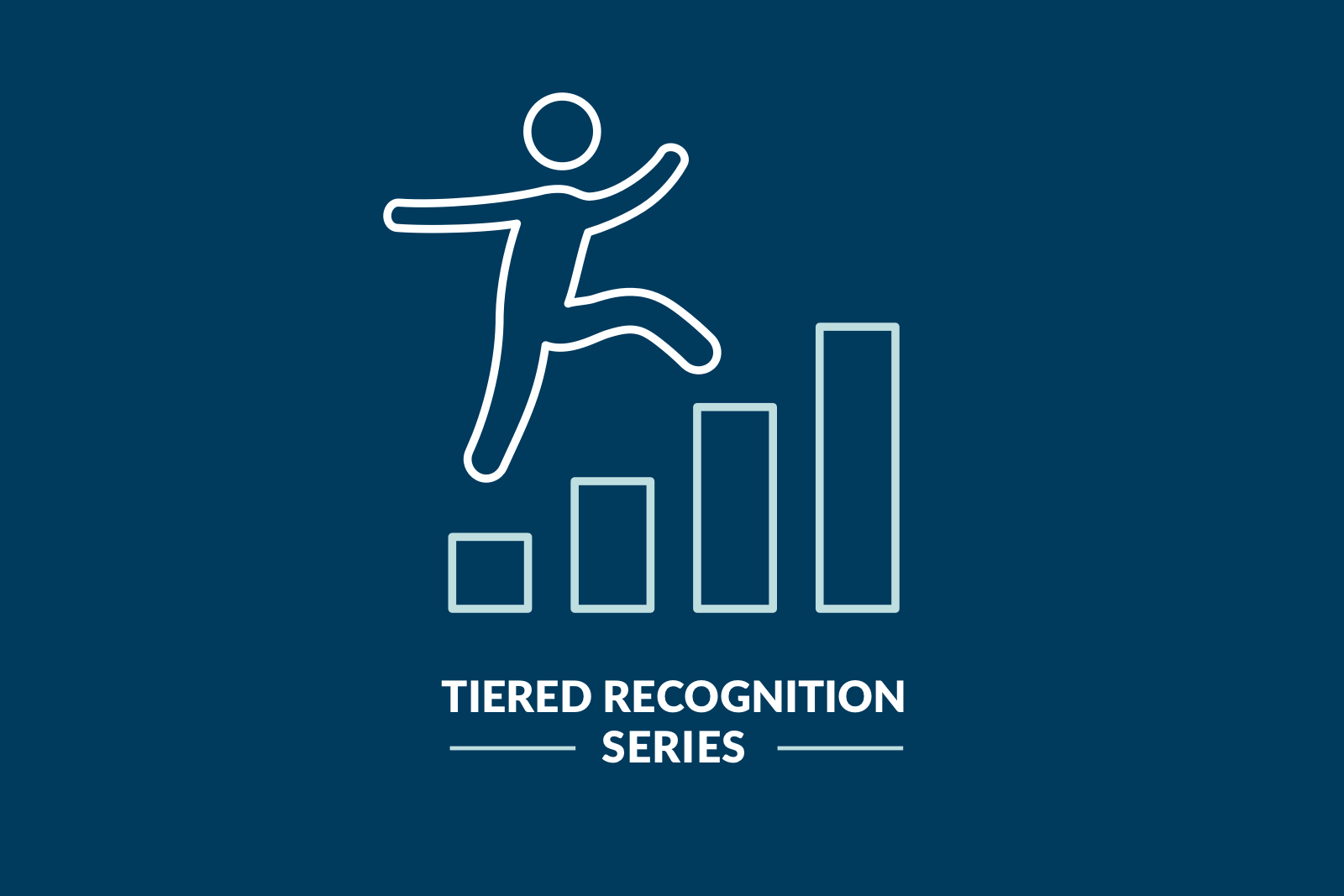Execution Is Everything

Second in a Three-Part Series on Tiered Recognition
In the first installment of our series on tiered recognition, we explored why brands should consider a tiered recognition strategy—forgoing a one-size-fits-all approach to rewards and benefits in favor of personalized perks and acknowledgment for higher value members. We also discussed how companies can use data to determine who represents the most value for the brand and to inform strategies ensuring those customers are recognized and rewarded accordingly.
In this second post of the series, let’s look at how to execute an effective tiered recognition strategy, and when—or at what points in the customer journey—to recognize and reward your customers in various tiers.
Combine data-driven planning with empowered employees
Like any loyalty program overall, a tiered recognition approach must appeal to customers and be cost-effective for the company. Designing effective tiered recognition requires data-driven planning and a commitment to providing employees with the tools, training, and power to successfully deliver it. Chief among them are:
-
Accurate and current customer data
-
An infrastructure that enables employees to use available information to identify individual customers
-
Dedicated time and resources to train and empower employees to deliver appropriate recognition at the right time
Let’s examine four minimum requirements to develop and implement a successful tiered customer recognition initiative.
Customer-level data
Accurate data at the individual customer level is necessary to establish parameters for the tier design. It also provides the individual scores and indicators employees will use to identify and recognize members’ tier status. This type of data includes:
-
Data points: customer ID, transaction and spending history—often accessible from an existing loyalty program, CRM initiative, or customer database—are used to determine the appropriate investment for rewards by tier.
-
Customer base-value distribution—the number of customers by dollar value or by purchase frequency, for example—helps determine potential tier segment qualifications.
-
Regional, national, or international market adjustments are useful for developing region-specific rewards. How a customer is recognized in the U.S. may not be the right way to recognize a customer in Greece or Brazil based on cultural and historical norms.
-
Purchase channels per customer can be used to determine the best channels to use when recognizing customers. For a large population, a company may opt for a digital channel. However, the most valuable customers may expect a more personal channel, such as recognition over the phone or in person.
A coordinated, company-wide effort
-
Support from senior management.
-
Shared objectives and collective understanding of why well-executed customer recognition is important. Executive management should establish and communicate goals that are measured and reported regularly.
-
Continuous employee training—especially in environments where new team members come on board frequently, or where front-line employees are a major touch point for the customer.
-
Efficient, easy access to thorough and accurate customer data.
Tools that facilitate customer recognition
A tiered recognition program may benefit from one or more tools designed to facilitate customer recognition. Select the tools that provide the most value based on company resources, culture, and existing technology. Examples include:
-
The company’s existing loyalty program can provide the data needed to design a recognition initiative and give employees the information necessary to deliver recognition on the spot. Membership tiers can be a convenient, intuitive tool to recognize and reward customers.
-
Even companies without a loyalty program can identify customers and provide employees with the information necessary for recognizing customers at the point of purchase or other key touch points.
-
Customer records like a passenger manifest (airlines or cruises), a reservation history (hotels or restaurants), or a purchase record (online stores) provide insight into customers’ preferences and values.
-
Employees empowered with data and training can personally recognize customers in numerous ways—from a simple “thank you for being a silver tier member,” to complimentary products, upgrades, or bonus incentives.
-
Personalized promotions should communicate to high-value members that they’re receiving an exclusive offer or bonus because they’ve reached a certain level or milestone
Targeted rewards, personalized channels
Not all customers like being recognized in the same way—even if the reward is the same. Tailor the channel of communication or reward eligibility based on customer preferences and generational trends. Consider these factors:
-
“Gen Z is more skeptical about loyalty programs than their predecessors, and less likely to respond to targeted communications. They grew up on social media, and value speed and convenience, yet they prefer to shop in store and interact with brands in person. Given Gen Z’s growing market influence and buying power, consider ways to use social media to deliver recognition in addition to more traditional channels and personalize it by individual customer whenever possible. (Read more about Gen Z’s brand perspectives in our white paper, “Generationally Speaking: Gen Z Transforms Loyalty.”)
-
For some customers, recognition is more meaningful if they can share the reward with friends or family—such as comping a tier for a friend, gifting miles, points, or other currency, or selecting a special gift as a thank-you to their spouses or significant other. Offer flexibility in who benefits from the rewards earned when possible.
Recognize important moments and milestones
Determine at what points in the customer journey you will recognize and reward your customers or members—and give front-line employees the information and authority to upgrade tier status or recognize specific milestones in real time. Key touchpoints to consider include:
-
Immediately after a purchase or transaction, whether the activity was online or in person. Today’s consumers expect immediacy, so recognize their milestone spends or tier achievements in the moment whenever possible.
-
During the act of engaging with your brand—flying, staying, purchasing at a counter or online, calling the customer service center, using apps or websites.
-
In regular communications, e.g., account statements or monthly status emails.
-
With special standalone communication—such as emails to thank customers for a purchase or welcome them to a higher level of membership.
-
At important milestones, like the customer’s birthday or the anniversary of joining the program or achieving a higher tier.
Now that we’ve covered why a brand should consider a tiered strategy and how it can execute one efficiently—our next installment in the series will explore how brands can leverage tiers for differentiation and deeper customer engagement.
Read previous blog: Personalization Drives Devotion
Robyn Zeller is director, Strategic Services, and Francesco Favazza is vice president, Strategic Services, for The Lacek Group, a Minneapolis-based data-driven loyalty, experience, and customer engagement agency that has been delivering personalization at scale for its world-class clients for more than 30 years. The Lacek Group is an Ogilvy company.

